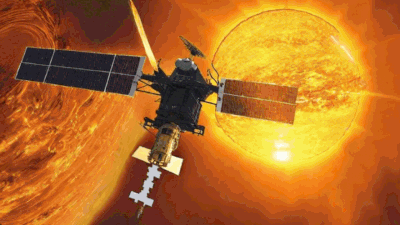Aditya-L1: The Indian Sun mission arrives at its ultimate location

The first solar observation mission from India has arrived at its final destination. Aditya-L1 reached the spot in space from which it will continuously observe the Sun on Saturday. The spacecraft has spent the last four months traveling towards the Sun since taking off on September 2. Prime Minister Narendra Modi referred to the mission, which was launched by the Indian Space Research Organization (ISRO) a few days after India became the first nation to land close to the lunar south pole, as “historic” and “extraordinary achievement.” The Prime Minister, who was once known as X, wrote on Twitter, saying, “It is a testament to the tireless dedication of our scientists in accomplishing the most complex and challenging space missions.”
The mission Aditya-L1, which bears the name of the Hindu deity that symbolizes the Sun, is India’s first space-based endeavor to investigate the largest object in the solar system. The position that the spacecraft has now reached between the Sun and the Earth is known as the Lagrange Point 1, or L1. The Lagrange Point, as defined by the European Space Agency, is where the gravitational pull of two massive objects, like the Sun and Earth, cancel each other out, making it possible for a spacecraft to “hover” and conduct continuous observations. At 1.5 million kilometers (932,000 miles) from Earth, Aditya-L1 is roughly 1% of Earth’s distance from the Sun.
Once Aditya-L1 arrives at this “parking spot,” it will be able to orbit the Sun at a velocity comparable to Earth’s. It can conduct scientific studies by continuously observing the Sun during eclipses and other events from this advantageous position. Seven scientific instruments are carried by the orbiter to study the photosphere, or the visible surface of the Sun, the solar corona, which is the outermost layer, and the chromosphere, which is a thin layer of plasma that lies between the photosphere and corona.
The spacecraft left Earth’s gravitational pull on September 30 after completing four orbits around the planet following launch on September 2. To make sure it was traveling in the intended direction toward its destination, ISRO announced changes to its trajectory at the start of October. According to the agency, some of the spacecraft’s instruments have already started gathering information and taking pictures.
A few days following launch, ISRO released the first pictures taken by the mission: one was a “selfie” that displayed two of its scientific instruments, and the other was a single frame that displayed Earth and the Moon. The organization unveiled the first full-disc images of the Sun last month, revealing minute details of the solar corona and chromosphere at wavelengths between 200 and 400 nanometers.
The mission, according to scientists, will aid in their understanding of solar activity and how solar winds and solar flares affect near-space and real-time Earth weather. The weather on Earth is constantly influenced by particle flow, heat, and solar radiation. They also have an impact on space weather, which is monitored by over 7,800 satellites, of which over 50 are located in India.

Aditya-L1 is thought by scientists to be able to shed more light on solar phenomena like solar storms and explosions, which could aid in early warning systems and prevent satellite damage by rerouting them out of danger. Although ISRO has not released the mission’s cost, reports in the Indian press place it at approximately 3.78 billion rupees ($46 million; £36 million).
India has now joined the exclusive group of nations that are already studying the Sun thanks to the mission’s success on Saturday. The European Space Agency (ESA) began studying the Sun in the 1990s, while NASA has been monitoring the Sun since the 1960s and Japan launched its first solar mission in 1981.
NASA and ESA launched a solar orbiter together in February 2020 with the goal of closely studying the Sun and gathering information to better understand its dynamic behavior. The Parker Solar Probe, NASA’s most recent spacecraft, created history in 2021 when it became the first to travel through the solar corona, the outermost layer of the planet.”
